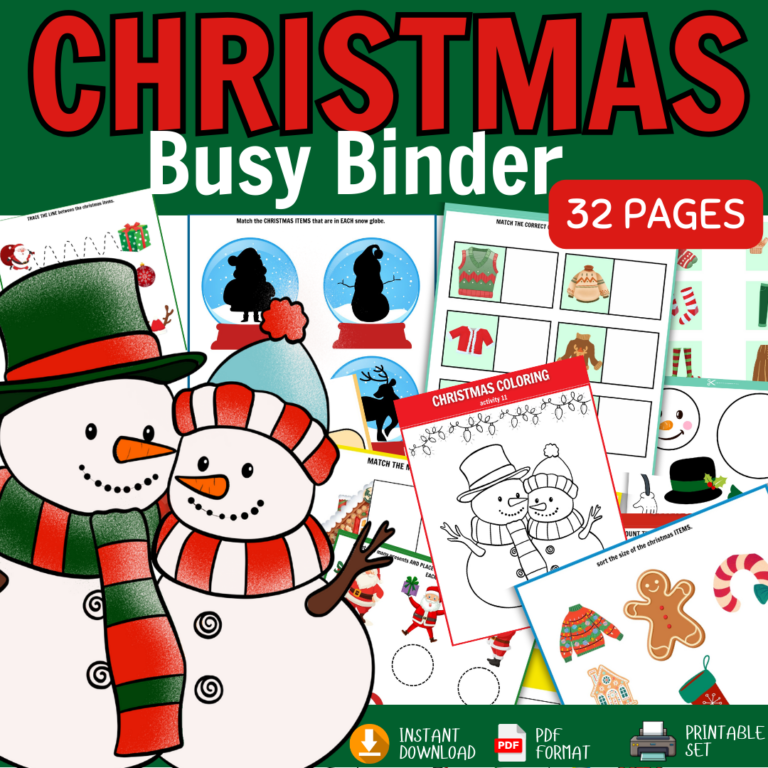Did you know that 98% of ESL learners struggle with at least one aspect of English grammar? I was shocked when I first learned this statistic. It’s a clear sign that mastering grammar is a universal challenge for those learning English as a second language. That’s why I’m excited to dive into the world of esl grammar exercises and explore how they can transform your language journey.
As an ESL teacher, I’ve seen firsthand how the right english grammar practice can make all the difference. From my experience, consistent practice with well-designed esl learning materials can boost a student’s confidence and fluency in no time. Let’s embark on this grammar adventure together and unlock the secrets to becoming a master of the English language!
The digital age has brought us amazing tools for language learning. Take ESL Robot 4.0, for example. This AI-powered English tutor offers 250 conversations on 14 topics and 27 sets of easy grammar exercises. It’s like having a personal grammar coach in your pocket! And for those just starting out, there are reading passages as short as 50 words, perfect for building confidence step by step.
But it’s not just about digital resources. Traditional esl grammar exercises still play a crucial role. From fill-in-the-blanks to sentence diagrams, these tried-and-true methods help cement grammar rules in your mind. And with resources catering to learners from 2nd to 11th grade, there’s something for everyone on this grammar-mastering journey.
Key Takeaways
- ESL grammar exercises are essential for mastering English
- Digital tools like ESL Robot 4.0 offer AI-powered grammar practice
- Traditional exercises remain effective for cementing grammar rules
- Resources are available for all levels, from beginners to advanced learners
- Consistent practice with varied materials leads to improved fluency
Introduction to ESL Grammar Exercises
ESL grammar exercises are powerful tools for non-native English speakers. These exercises help build a strong foundation in English language basics. From simple everyday phrases to complex structures, grammar drills for ESL students cover it all. They’re designed to boost communication skills, allowing learners to express themselves accurately in various situations.
What Are ESL Grammar Exercises?
ESL grammar exercises are structured activities that focus on specific language rules. They come in many forms, like fill-in-the-blanks, multiple-choice questions, and sentence corrections. ESL grammar worksheets often include a mix of these exercises, providing a comprehensive learning experience.
These exercises typically cover a wide range of topics. They start with basics like the alphabet and numbers, then move on to more complex concepts like tenses and sentence structure. For example, one lesson might focus on the verb “to be,” while another tackles prepositions or plural forms.
Importance of Grammar in Language Learning
Grammar is the backbone of any language. It’s what gives our words meaning and helps us communicate clearly. Without proper grammar, even the most extensive vocabulary can fall flat. That’s why ESL grammar worksheets are so crucial in language learning.
Good grammar skills help learners:
- Express ideas clearly and accurately
- Understand complex texts and conversations
- Avoid misunderstandings in daily communication
- Build confidence in speaking and writing English
By practicing with grammar drills for ESL students regularly, learners can gradually improve their language skills. It’s a step-by-step process that leads to mastery of the English language.
Types of ESL Grammar Exercises
English grammar exercises for non-native speakers come in various forms. I’ve found that these exercises cater to different learning styles and help students grasp grammar concepts more effectively. Let’s explore some popular types of interactive ESL grammar activities.
Fill-in-the-Blank Activities
Fill-in-the-blank exercises are a staple in ESL grammar practice. These activities challenge learners to complete sentences with the correct word or phrase. They’re great for practicing specific grammar points like verb tenses, prepositions, or articles.
Multiple Choice Questions
Multiple choice questions offer a selection of answers, with only one being correct. This format is excellent for testing understanding of grammar rules and their application. It’s particularly useful for practicing tricky aspects like irregular verbs or confusing word pairs.
Sentence Correction Exercises
In sentence correction exercises, students identify and fix grammatical errors. This type of activity sharpens proofreading skills and deepens understanding of grammar rules. It’s especially helpful for advanced learners working on nuanced grammar points.
| Exercise Type | Focus Area | Skill Level |
|---|---|---|
| Fill-in-the-Blank | Verb Tenses, Prepositions | Beginner to Intermediate |
| Multiple Choice | Irregular Verbs, Word Pairs | All Levels |
| Sentence Correction | Error Identification, Proofreading | Intermediate to Advanced |
These diverse exercise types form the backbone of many interactive ESL grammar activities. By incorporating a mix of these exercises, learners can improve their grammar skills across various areas and proficiency levels.
Beginner Level ESL Grammar Exercises
Starting your journey in English? I’ve got you covered with some great beginner-level exercises. These activities focus on key grammar points to build a strong foundation for your language skills.
Simple Present Tense Practice
The simple present tense is essential for esl sentence structure practice. It helps you talk about daily routines, facts, and general truths. Try this exercise:
- Fill in the blanks with the correct form of the verb:
- She _____ (work) at a hospital.
- They _____ (play) soccer every weekend.
- The sun _____ (rise) in the east.
Introduction to Nouns and Pronouns
Nouns and pronouns are building blocks of sentences. Let’s practice identifying them:
| Sentence | Noun | Pronoun |
|---|---|---|
| The cat chased its toy. | cat, toy | its |
| She gave him a book. | book | She, him |
| They visited the museum. | museum | They |
Basic Sentence Structure
Understanding sentence structure is crucial for grammar review for english learners. A basic English sentence follows the Subject-Verb-Object (SVO) pattern. Practice by arranging these words:
- the / eats / cat / fish
- plays / Sarah / piano / the
- drink / I / water / cold
Remember, practice makes perfect! Keep working on these exercises to improve your English grammar skills.
Intermediate Level ESL Grammar Exercises
As ESL learners progress, they encounter more complex grammar concepts. Engaging grammar lessons for ESL students at this level dive deeper into language intricacies. Let’s explore some key areas that intermediate learners focus on to enhance their English skills.
Past Tense Variations
Intermediate ESL grammar exercises often tackle the nuances of past tense. Students learn to distinguish between simple past, past continuous, and past perfect. These exercises help learners express actions that happened at different points in the past with precision.

Understanding Adjectives and Adverbs
Exercises focusing on adjectives and adverbs are crucial for descriptive language. Learners practice using comparative and superlative forms, as well as adverbs of frequency and manner. This enhances their ability to create vivid and accurate descriptions in English.
Sentence Combining Techniques
Intermediate ESL grammar exercises often include sentence combining activities. These exercises help students create more complex and sophisticated sentences by joining simple sentences using conjunctions, relative pronouns, and other connectors.
| Exercise Type | Percentage at B1 Level | Focus Area |
|---|---|---|
| British Icons | 4% | Cultural Understanding |
| Technical Topics | 4% | Specialized Vocabulary |
| Life in the USA | 75% | American Culture |
| Interactive People Discussions | 8% | Conversational Skills |
ESL grammar exercises at this level often incorporate real-world contexts. For example, exercises might use themes like “125 Years of the Central Library in Derby, UK” or “American States and their Capitals” to make learning more engaging and relevant.
Advanced Level ESL Grammar Exercises
I’ve found that advanced english grammar practice truly tests your language skills. These exercises push you to master complex structures and nuanced expressions. Let’s dive into some challenging areas that will elevate your English proficiency.
Complex Sentence Construction
Advanced learners often struggle with creating intricate sentences. I recommend focusing on exercises that combine multiple clauses. Try reordering sentences or filling in gaps with appropriate conjunctions. This practice helps you express sophisticated ideas clearly.
Mastering the Subjunctive Mood
The subjunctive mood can be tricky, even for native speakers. ESL learning materials often include exercises on using “if” clauses correctly. Practice with sentences like “If I were you…” or “I wish it were…” to grasp this concept fully.
Nuances of Conditionals
Conditionals are a cornerstone of advanced English. I’ve found that working through various types of conditional sentences greatly improves fluency. Let’s look at some statistics on conditional exercises:
| Conditional Type | Number of Exercises | Percentage of Total |
|---|---|---|
| All Conditionals | 13 | 48% |
| Third Conditional | 5 | 19% |
| Other Types | 9 | 33% |
These exercises cover a wide range of conditional uses, helping you express hypothetical situations with precision. Remember, consistent practice with quality esl learning materials is key to mastering these advanced grammar concepts.
Creative ESL Grammar Activities
I love making grammar fun for ESL students! Grammar drills for ESL students don’t have to be boring. Let’s explore some exciting ways to spice up your language learning journey.
Grammar Games for Interactive Learning
Interactive ESL grammar activities can transform tedious lessons into thrilling adventures. Games like “Shoot for Points” and “Grammar Police” turn practice into play. My favorite is “Tic Tac Toe” with a grammar twist – it’s quick, engaging, and perfect for reviewing various structures.

Role-Playing Scenarios
Role-playing brings grammar to life! I create scenarios where students use specific tenses or structures. For example, “Time Travelers” lets learners practice past and future tenses as they navigate different eras. It’s a blast and reinforces grammar naturally.
Storytelling with Grammar Focus
Storytelling is a powerful tool for grammar practice. I use “Chain Stories” where each student adds a sentence using a particular grammar point. It’s amazing how creative ESL students get while focusing on present perfect or conditionals!
| Activity | Grammar Focus | Engagement Level |
|---|---|---|
| Board Game | Mixed Tenses | High |
| Timeline | Past Perfect | Medium |
| Four in a Row | Verb Forms | High |
These creative activities make grammar practice enjoyable and effective. By incorporating games, role-play, and storytelling, ESL students can improve their skills while having fun!
Common ESL Grammar Challenges
Learning English can be tricky, especially when it comes to grammar. I’ve seen many students struggle with certain aspects of English grammar. Let’s dive into some common challenges and how to tackle them with esl grammar worksheets and english grammar exercises for non-native speakers.
Subject-Verb Agreement Issues
One of the biggest hurdles for ESL learners is matching subjects with the correct verb forms. It’s a common mistake that even advanced learners make. For example, saying “He play soccer” instead of “He plays soccer” is a typical error.
Misusing Prepositions
Prepositions are tiny words that pack a big punch in English. Many students find it hard to use them correctly. It’s not uncommon to hear phrases like “I’m waiting you” instead of “I’m waiting for you.”
Confusing Similar Sounds
English has many words that sound alike but have different meanings. This can lead to mix-ups in writing and speaking. For instance, “their,” “there,” and “they’re” often cause confusion.
| Common Challenge | Example Error | Correct Usage |
|---|---|---|
| Subject-Verb Agreement | They is happy. | They are happy. |
| Preposition Misuse | I’m afraid from spiders. | I’m afraid of spiders. |
| Similar Sounds | Your the best! | You’re the best! |
To overcome these challenges, I recommend using targeted esl grammar worksheets. These exercises help reinforce correct usage and build confidence. Remember, practice makes perfect!
Resources for ESL Grammar Exercises
I’ve found a treasure trove of resources for ESL grammar exercises. These tools are perfect for anyone looking to improve their English skills through esl sentence structure practice and grammar review for english learners.
Apps and Online Platforms
The digital world offers countless options for grammar practice. Grammarly stands out as a powerful tool to correct spelling, grammar, and punctuation mistakes. For a more structured approach, Cambridge University Press’s Grammar in Use series provides apps for beginners, intermediate, and advanced learners.

Recommended Textbooks and Workbooks
“The Elements of Style” by Strunk and White is a classic guide for mastering English grammar. For a comprehensive look at both British and American English, Oxford Modern English Grammar is an excellent choice. These books offer in-depth esl sentence structure practice and grammar review for english learners.
Useful Websites for Practice
The internet is brimming with free resources. Purdue OWL offers extensive materials for English learners at all levels. Grammar Monster provides quick tips and detailed explanations. For interactive learning, UsingEnglish.com has numerous tests and quizzes. The British Council website features lessons, explanations, and games that make grammar review for english learners engaging and fun.
- Edufind.com: Simple, easy-to-understand language
- OxfordDictionaries.com: Learn new words and grammar
- ESL Kids Lab: Free worksheets and games for young learners
- English Media Lab: Video lessons and interactive quizzes
With these resources, you’ll find plenty of opportunities for esl sentence structure practice and comprehensive grammar review. Happy learning!
Tips for Teaching ESL Grammar
Teaching ESL grammar can be a blast! I’ve found that engaging grammar lessons for ESL students work wonders. Let’s dive into some fun strategies that’ll make your grammar classes pop.
Engaging Students with Fun Activities
Grammar worksheets are a hit with students, but why stop there? I love using grammar games to spice things up. These games make learning a joy and help students remember tricky rules. For younger kids, I use songs and play-based activities. It’s amazing how quickly they pick up grammar through these methods!
Incorporating Real-World Examples
Real-life usage is key in ESL grammar exercises. I use discussion cards as prompts, encouraging students to apply grammar rules in context. We explore various text types like newspaper articles and letters. This approach helps students see how grammar works in everyday communication.
Differentiating Instruction for Various Levels
Every student’s different, so I tailor my approach. Beginners need lots of modeling and repetition. For older students who can think abstractly, I focus more on form. I follow a specific order: sentence structure, nouns, pronouns, and so on. This structured approach, combined with digital and printable worksheets, ensures everyone’s learning at their own pace.
“Teach grammar based on what students need for their communication goals.”
Remember, humor goes a long way in making grammar fun. By mixing these strategies, you’ll create engaging ESL grammar exercises that stick!
Assessing Progress in ESL Grammar
Tracking progress in English grammar practice is crucial for ESL learners. I’ve found that regular assessment helps identify strengths and areas for improvement. Let’s explore effective ways to measure grammar skills using various ESL learning materials.
Importance of Feedback
Feedback is vital in ESL grammar learning. It guides students towards correct usage and helps them understand their mistakes. I encourage using a mix of formal and informal assessments to provide comprehensive feedback.

Using Quizzes Effectively
Quizzes are powerful tools for assessing grammar knowledge. I recommend using a variety of question types, including fill-in-the-blanks, multiple-choice, and sentence correction. These quizzes can cover different language domains like vocabulary, phonics, and sentence structure.
Self-Assessment Techniques
Self-assessment empowers learners to take charge of their progress. I suggest using techniques like journaling, creating portfolios, and recording speaking exercises. These methods allow students to track their improvement over time and identify areas needing more practice.
Remember, assessment in ESL grammar isn’t just about tests. It’s about creating a supportive learning environment where students can grow and build confidence in their English skills. By combining various assessment methods, we can get a complete picture of a learner’s progress and tailor our teaching to their needs.
The Role of Technology in ESL Grammar Learning
Technology has revolutionized the way we learn English grammar. I’ve seen firsthand how digital tools make grammar drills for ESL students more engaging and effective. Let’s explore some game-changing tech that’s transforming ESL education.
Online Grammar Checkers
Online grammar checkers are a blessing for ESL learners. They catch mistakes instantly, helping students improve their writing skills. I love using these tools to double-check my work and learn from my errors.
Virtual Classrooms and Resources
Virtual classrooms have opened up a world of opportunities. With platforms like Zoom, ESL students can connect with native speakers globally. This real-time interaction is invaluable for practicing grammar in context.
Interactive Learning Platforms
Interactive ESL grammar activities are my favorite way to practice. Apps like Duolingo and Memrise use gamification to make learning fun. Did you know Duolingo offers over 40 languages? That’s a lot of grammar to explore!
Here’s a quick look at some popular ESL tech tools:
- Busuu: Connects you with native speakers for feedback
- Google Translate: Integrates with various apps for on-the-go learning
- Funbrain: Offers educational games for younger learners
- Dave’s ESL Cafe: Provides clear grammar explanations
With these tools, mastering English grammar has never been more accessible or enjoyable. Technology truly empowers ESL students to take control of their learning journey.
Conclusion: Embrace the Journey of Learning Grammar
As I reflect on the world of ESL grammar exercises, I’m reminded of the incredible journey language learners embark upon. English grammar practice isn’t just about rules and structures; it’s a path to self-expression and cultural understanding. The stats show that teaching grammar through games and visual aids can be highly effective, making the learning process both fun and memorable.
Building Confidence through Practice
I’ve seen firsthand how consistent practice builds confidence. Writing short passages daily and using prompts to overcome writer’s block are excellent strategies for improving language skills. ESL grammar exercises provide a structured approach to overcoming hurdles, paving the way for fluent communication. Remember, seeking feedback from teachers or language partners can significantly accelerate your progress.
Lifelong Learning and Language Mastery
The beauty of language learning lies in its lifelong nature. Research indicates that bilingualism can enhance cognitive flexibility, improve multitasking skills, and even delay age-related cognitive decline. As you continue your journey with English grammar practice, know that you’re not just learning a language – you’re expanding your mind and enriching your academic and personal experiences. Embrace this journey, and watch as doors to new opportunities open before you.






